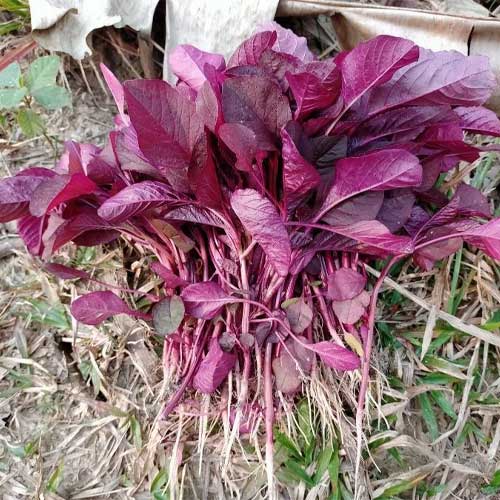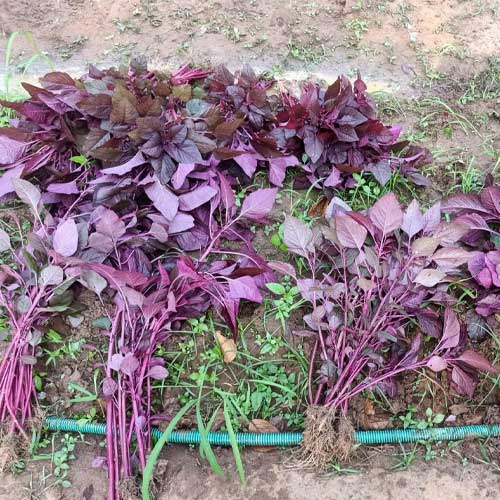Total Number of seeds: 1000
Amaranthus Red Kanka Seeds produce vibrant, fast-growing plants with bright red leaves and hollow stems. This variety is known for its tender, sweet, and non-fibrous leaves, making it a popular choice for salads, stir-fries, and traditional Indian dishes. The red color of the leaves retains its vibrancy even after cooking, making it visually appealing and nutritionally rich. Amaranthus Red Kanka is widely used as a leafy vegetable in many cuisines due to its mild flavor and health benefits.


In India, Amaranthus Red Kanka Seeds can be sown year-round in warm climates, but the best time is from February to May and September to October. These plants thrive in hot, sunny conditions and produce vibrant, nutritious greens that are ideal for salads, stir-fries, and soups.
1. Apply Nutrient-Rich Fertilizers
When your plants begin flowering, use nutrient-rich fertilizers like Organic Bone Meal Powder or Vermicompost. This helps in boosting the bloom and enhances overall yield.
2. Use Organic Fertilizers
Feed your plants with organic fertilizers such as Cow Dung Manure or Neem Cake. Organic options promote healthy soil life.
3. Regular Feeding
Apply fertilizers every 20-25 days to ensure plants receive a steady supply of nutrients. Choose from various options like Cocopeat Compost for moisture retention.
Amaranthus Red Kanka is known for its vibrant red leaves and sweet, non-fibrous stems. The leaves are rich in vitamins A, C, and K, as well as iron and calcium. This unique variety is perfect for adding color and nutrients to dishes while retaining its red color even after cooking.
Amaranthus is rich in dietary fiber, vitamins, and essential minerals. It is perfect for adding to salads, stir-fries, and soups due to its mild flavor and vibrant color. The red veins and stems add a visual appeal to dishes and are a good source of antioxidants.
When growing Amaranthus Red Kanka Seeds, ensure the soil is loose and well-draining to support proper root development. Water regularly to keep the soil moist but avoid waterlogging. Monitor for pests and diseases to keep the plants healthy.
Common issues include pests like aphids and diseases like powdery mildew. To prevent these problems, ensure good airflow and use organic pest control methods. Remove affected leaves to avoid disease spread.
Sign in now to receive a 5% instant discount on your first order when using code WELCOME. Begin your organic journey today!
By logging in, you're agreeing to our Terms of Service and Privacy Policy.
Gautam
Colour strong aa raha hai, kaafi healthy feel ho raha hai.
Nazia
Nice early growth and promising colour aa raha hai.
Rashmi
Cocopeat me sow kiya tha and sprouting quick ho gaya.
Rakesh
Sprouts ache aaye and waiting to see the results.
Niharika
Sprouts uniform aaye, kaafi safe packaging thi.
Nitin
Nice packaging and seeds evenly sprout ho gaye.
Arun
Early germination smooth tha and plants balanced grow ho rahe hain.
shamil
All these products are very good. Happy customer
Imtiyaz
Good seed quality, early growth kaafi promising lag rahi hai.
Tara
Sunlight me rakha toh growth aur better ho gaya, waiting to see the results.